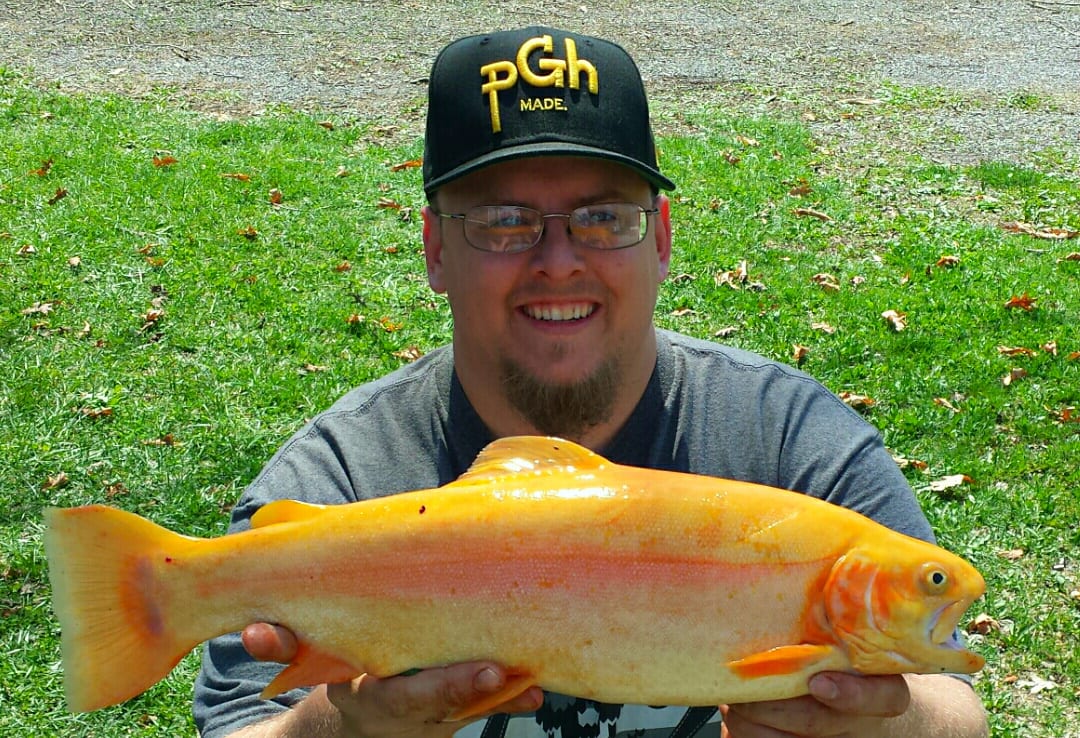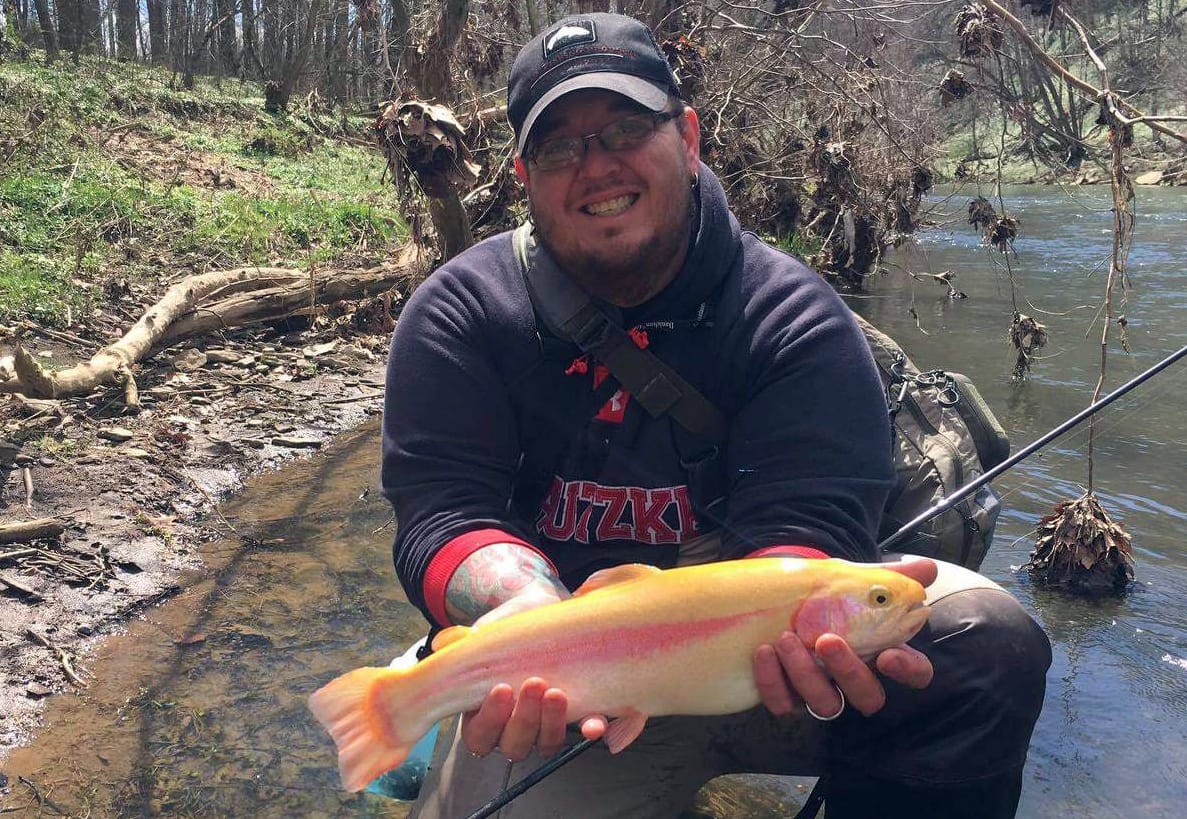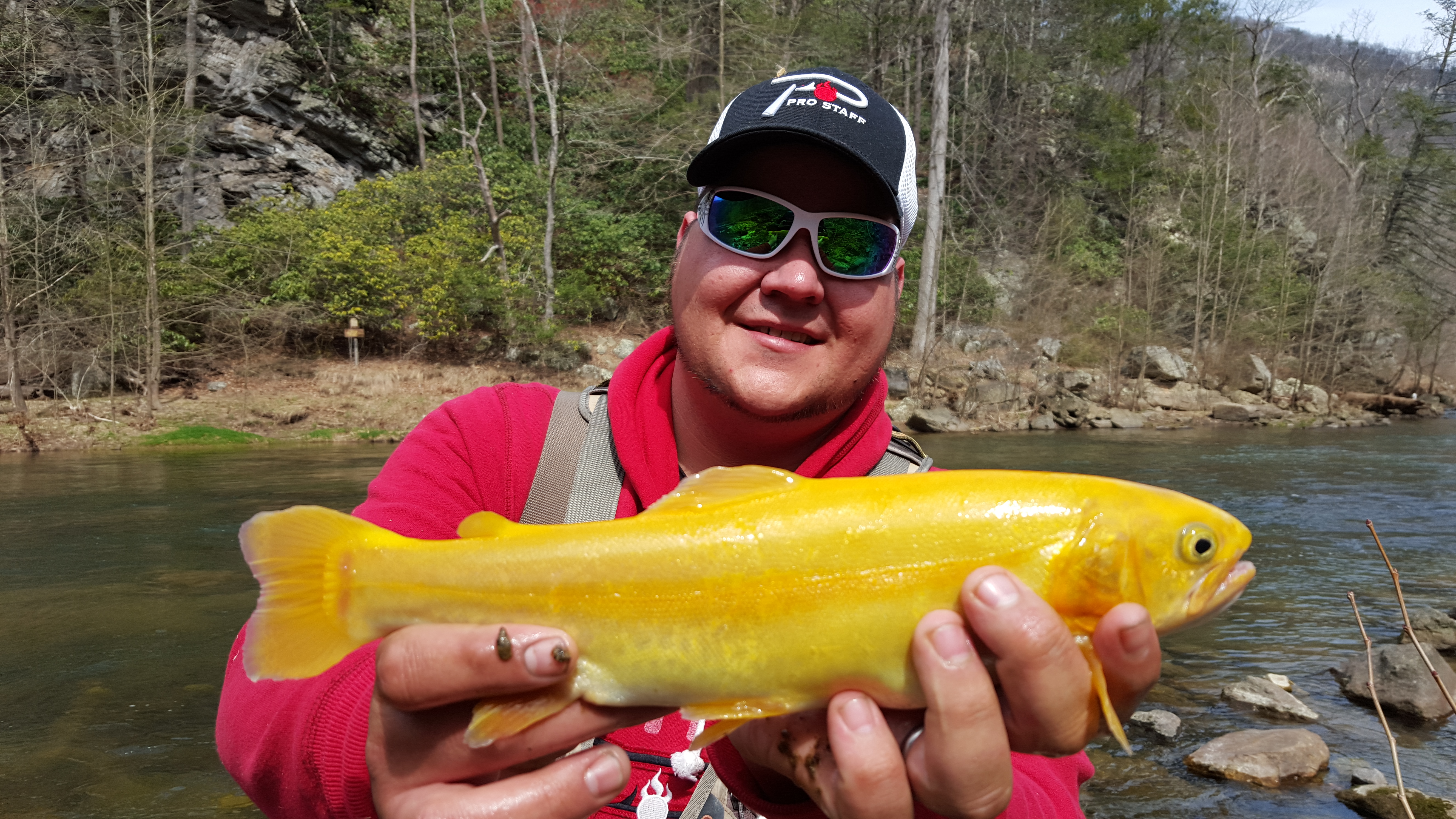Trout
Pennsylvania Golden Rainbows Heavily Stocked for Saturday’s Opener
By: Chris Shaffer
Golden rainbows have been stocked in Pennsylvania for almost 50 years. Meanwhile, in today’s social media happy world their popularity is skyrocketing. Photos of large golden rainbows go viral frequently. Anglers aggressively searched stocked waters for a chance at catching them.
On the other hand, there’s also confusion around what they really are. Oftentimes, mistaken for a true golden trout, they can be misrepresented in the angler community. To help us understand what a golden rainbow is, why they are stocked and more we rang Andy Shiels, Director of Bureau of Fisheries for the PA Fish and Boat Commission (PAFBC). Shields and his team were kind enough to answer a few questions in hopes of aiding anglers in understanding more about the fish.
Team Pautzke: Is a golden rainbow the same thing as a golden trout?
PAFBC: No. A golden rainbow trout (Oncorhynchus mykiss) is simply a color variation of a rainbow trout. Golden trout (Oncorhynchus aguabonita) are a distinct species native to specific regions of California, such as the Kern River drainage.

Team Pautzke: Whenever we post a photo of a golden rainbow anglers argue that it’s a palomino. Is it?
PAFBC: The initial stockings of palomino rainbow trout in Pennsylvania waters occurred during the 1967 season and back then we did call them a palomino. Today, however, due to their more brilliant coloration, we use golden rainbow trout exclusively for production purposes rather than the lighter palomino rainbow trout. We’ll explain more of this later.
Team Pautzke: How do they make a golden rainbow?
PAFBC: The golden rainbow trout originated from a single rainbow trout that was spawned in the fall of 1954 in West Virginia by The West Virginia Division of Natural Resources. This trout’s body color was a chimera of golden and normally pigmented tissue. When this fish was crossed with a normally pigmented rainbow trout, the offspring (what we have come to refer to as palomino rainbow trout) were lighter in color.
In Pennsylvania, the rise of the palomino rainbow trout stemmed from obtaining fertilized golden rainbow trout eggs from West Virginia. Subsequently, when these golden rainbow trout reached maturity, they were crossed with normally pigmented rainbow trout and the offspring resulted in the development of the palomino rainbow trout.
The initial stockings of palomino rainbow trout in Pennsylvania waters occurred during the 1967 season. At present, however, due to their more brilliant coloration, we use golden rainbow trout exclusively for production purposes rather than the lighter palomino rainbow trout. When a palomino is crossed with another palomino, the offspring are a mix of golden, palomino and normal rainbows. When golden rainbows are crossed with one another, all the offspring are golden. This link http://fishandboat.com/anglerboater/75archives/1970s/1972arch/03march1972.pdf will take you to a classic PA Angler magazine article (Page 8) that explains everything in detail.
Team Pautzke: How many golden rainbows are stocked per year.
PAFBC: The PFBC will stock a total of 8,530 golden rainbow trout in 2016.
Team Pautzke: Are they stocked all over PA or do you have to go to a certain area to catch them?
PAFBC: They are stocked in lakes and streams that are capable of supporting rainbow trout. Typically, in many of our more popular stocked trout waters.
Team Pautzke: Can you eat golden rainbows? Do they have pink or white meat?
PAFBC: Yes you can eat them. Having caught and filleted a few, their meat is a little more pink/orange that a typical hatchery rainbow, but the flavor is the same. They eat the same pelleted food as all of the other species in the hatchery.

Team Pautzke: How big do they get and how long do they take to grow to trophy sizes?
PAFBC: The PFBC considers the golden rainbow program to be a trophy opportunity. As such, they range in size from 14 to approximately 22 inches. Occasionally, some larger ones are produced and caught. Golden rainbows are only spawned and reared at certain facilities and so transfers occur throughout the year to ensure that they can be stocked statewide.
We have purposefully limited the upper size of these fish to ensure consistency and transportability around the state. Once stocked into streams or lakes, some may live days, weeks or months before being harvested. Due to their unnatural coloration, which draws the attention of predators, and the fact that many stocked trout waters may reach temperatures too warm for trout in late summer, it would be highly unexpected to find a golden rainbow trout surviving as a holdover into the next year.
Team Pautzke: Do they bite and eat like a rainbow trout?
PAFBC: Yes and no. A calm, unharassed golden rainbow will strike and eat just like any other hatchery rainbow trout. However, because these fish are so visible they draw the attention of anglers, many of whom want to catch the “golden ring” as it were. As a result, aggressive casting, bumping with lines and the plopping of lures near them can turn them off pretty quickly. A normally camouflaged trout can swim away from the pressure and is less likely to be seen and constantly targeted. On the other hand, we have witnessed time and again, determined anglers staying with a particular golden rainbow in a test of patience until one of them gives in.

Team Pautzke: Are they fun to catch?
PAFBC: It seems like people either love them or think they are strange. They fight the same as normal rainbows and will strike similar baits and lures, but they do seem to show a propensity for chartreuse, yellow and very bright colors. Adding one of these to your day’s catch is for many the highlight of their stocked trout experience.
Team Pautzke: Will stocking golden rainbows continue in the future?
PAFBC: Golden rainbows, also referred to as “Palominos” (which we explained above is technically no longer the correct name) are a popular addition to Pennsylvania’s stocked trout program. They are relatively few in number, they are stocked at sizes larger than the standard hatchery trout and they generate excitement and interest when they are placed in streams and lakes. They have their fans and usually create a buzz on the stream among a group of anglers when one is landed. We will continue to stock them annually.
Editor’s Note: Golden rainbows are now stocked in several states in the east, including West Virginia, Pennsylvania, Rhode Island, Maryland, Missouri and others. The general trout opener in Pennsylvania takes place Saturday where golden rainbows will be available in all creeks and lakes that are stocked with rainbow trout.








Are these fish stalked the same as regular rainbow and other trout throughout the stalking season? Or are they only stalked once a year.